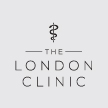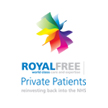- 07710 105 356
- darrellallen.privatepractice@nhs.net
TURP
Transurethral resection of the prostate
- Overview
- When it is necessary
- How it is performed
- Recovery
- Risk
- Alternatives
Introduction
A transurethral resection of the prostate (TURP) is a surgical procedure that involves cutting away a section of the prostate gland.
It is often used to treat prostate enlargement (benign prostate hyperplasia).
A TURP may be necessary if:
- The first treatments for prostate enlargement, such as medication, fail to control symptoms - this occurs in around one in 10 men.
- An enlarged prostate leads to complications, such as bladder stones or a bladder infection because the bladder is unable to be emptied properly.
Advantages
Most men who have a TURP find it improves both their urinary symptoms and quality of life.
The symptoms that bothered the patient before are no longer there or are present to a much lesser extent. For example:
- There should no longer be a need to strain to urinate.
- The patient should be able to go about your normal activities without having to worry about being near a toilet.
- The patient may not need to get up in the night to urinate as much as they used to.
- The patient may also notice they have a stronger stream of urine.
Disadvantages
In most cases, a TURP is a safe procedure and the risk of serious complications occurring during surgery is very small.
However, almost all men who have had a TURP lose the ability to ejaculate semen during sex or masturbation, although they still have the physical pleasure associated with ejaculation (the climax). This is known as retrograde ejaculation and can occur in as many as 9 out of 10 cases.
Also, many men temporarily lose the ability to control their bladder (they develop urinary incontinence) although this usually passes a few weeks after surgery. In rare cases, urinary incontinence may be persistent and need further treatment. As with all surgery there is a risk of infection and bleeding afterwards, which may need additional treatment.
Illustration of TURP

1) Bladder containing urine
2) Pubic bone
3) Enlarged prostate, blocking flow of urine through the urethra
4) Opening of urethra
Prostate enlargement
The prostate is a small gland in the pelvis only found in men. It is located between the penis and bladder and surrounds the urethra (the tube that carries urine from the bladder to the penis).
If the prostate becomes enlarged, it can place pressure on the bladder and urethra. This can cause symptoms that affect urination (passing urine when going to the toilet).
When it is necessary
A transurethral resection of the prostate (TURP) is usually recommended for prostate enlargement that is causing problematic urinary symptoms and fails to respond to treatment with medication. In some cases patients are unable to pass urine at all and develop a painful condition called urinary retention.
The severity of urinary symptoms from prostate enlargement is assessed based on problems with your normal pattern of urination.
You may experience some or all of the following problems at least half the time you try to urinate:
- Problems starting to urinate.
- A weak urine flow or stopping and starting.
- Having to push or strain to pass urine.
- A frequent need to urinate.
- Waking up frequently during the night to urinate (nocturia).
- A sudden urge to urinate, which can result in incontinence if you are unable to find a toilet quickly enough (urge incontinence).
- Being unable to empty your bladder fully.
The first treatment option for problematic urinary symptoms from prostate enlargement is usually medication, such as:
- Finasteride or Dutasteride help to reduce the size of the prostate
- alpha blockers help relax the muscles of your bladder, making urination easier
These medications do not work for everyone because the degree of prostate enlargement is often too large to be controlled using medication. If this is the case, a transurethral resection of the prostate is usually recommended.
The procedure may also be recommended if you develop a complication from not being able to empty your bladder fully. Examples are:
- Repeated urinary tract infections.
- Repeatedly passing large amount of blood in your urine.
- Kidney failure (loss of normal kidney function).
- Bladder stones.
- Difficulty with fully emptying the bladder.
How it is performed
A TURP is performed using anaesthetic so you will not feel any pain during the procedure. The type of anaesthetic used may be either:
- A general anaesthetic where you will be unconscious throughout the procedure.
- A spinal or epidural anaesthetic where you will be awake during the procedure but not able to feel anything below your waist.
Surgery
A TURP is usually carried out using a device called a resectoscope. A resectoscope is a thin metal tube that contains:
- A light, camera and a loop of wire.
The surgeon will insert the resectoscope into your urethra (the tube that carries urine from your bladder to your penis) before guiding it to the site of your prostate with the help of the light and the camera.
An electric current is used to heat the loop of wire, and the heated wire is used to cut away the section of your prostate that is causing your symptoms. After the procedure, a catheter (a thin, flexible tube which sits in the bladder held in place by a balloon) is used to carry saline water into the bladder to help prevent clots forming.
A TURP can take up to an hour to perform, depending on how much of your prostate needs to be removed.
Once the procedure has been completed, you will be moved back to your hospital ward so you can recover.
Most patients leave the hospital later the same day and after one day the catheter is usually removed.
Recovering from surgery
Following a transurethral resection of the prostate (TURP), you should not feel any severe pain however, there may be some discomfort from the catheter and your urethra (the tube through which urine passes) will be swollen and sore.
however, there may be some discomfort from the catheter and your urethra (the tube through which urine passes) will be swollen and sore.
Urination
A tube called catheter will be inserted into your urethra at the end of the opeartion so that urine and any blood will drain from the bladder. Salt water may be irrigated through the the catheter to wash out the bladder and remove any blood clots and other debris. This is not usually painful but may make your bladder feel uncomfortably full.
After things have settled the catheter will be removed and hopefully you will be able to pass urine normally. You can then go home. This normally happens about 24-48 hours after surgery. In some patients they are not able to pass urine once the catheter has been removed and it therefore has to be replaced for a short time. This allows the bladder to rest.
Rest
After having a TURP, most men are up and about around a few days after surgery,however, you will be advised to take things easy for about a month to six weeks afterwards.
For the first four weeks, you should not lift or move any heavy objects (including shopping) or do any housework or digging. If possible, ask friends or family members if they can help around the house.
Once you feel able, some gentle exercise such as walking will help keep your blood circulating and lower your risk of getting a blood clot in your legs.
Any symptoms of pain can usually be treated by taking over-the-counter painkillers, such as Paracetamol or Ibuprofen.
Blood in urine
After having a TURP, you may occasionally notice some blood in your urine. Around a week or two after the operation the amount of blood may increase as the scab on your prostate falls off. If the increased blood in your urine continues for longer than 48 hours or you start to notice blood clots you should contact me urgently..
Drinking plenty of fluids, such as water, fruit juice and tea, will help flush any blood or small blood clots out of your bladder.
Sometimes you may feel a stinging sensation when you urinate. Despite the stinging and a need to urinate more frequently, you should still drink plenty of fluid because it will also help prevent an infection from developing.
Returning to work
It may take between four and eight weeks to fully recover from a TURP. I willl advise you when it is safe to return to work. This will depend on your occupation ,for example, if you work in an office, you may be able to return to work sooner than someone who does heavy manual work.
Driving
You will be advised not to drive for six weeks after having a TURP. You will usually be able to drive again when you can comfortably carry out an emergency stop.
Having sex
It will probably be several weeks after your operation before you feel comfortable enough to have sex.Most men need to wait for six to eight weeks before having sex, after which time any bruising and tenderness should have healed.
Check-up
Before you leave hospital we will arrange a follow up appointment. You should usually attend this with a full bladder so a flow rate can be performed. This will tell us objectively how much your flow has improved. It may take several months for symptoms such as getting up in the night to pass urine and frequency to improve.
Risks: Common (Greater than 1 in 10):
- Burning or bleeding when passing urine (usually settles spontaneously).
- Urinary tract infection requiring antibiotics.
- Retrograde ejaculation (80% of patients) - during ejaculation semen travels back into the bladder rather than out as usual through the penis. This is not harmful and the semen will exit the bladder the next time you pass urine which may make it look cloudy.
- Problems with getting an erection.
- No improvement in urinary symptoms, especially the issue of incontinence.
- Need for a further operation in the future due to re-growth of the prostate (the re-operation rate is approximately 2% per year).
- Injury to the urethra causing the formation of a narrowing (stricture).
Occasional (1 in 10 to 1 in 50):
- Failure to pass urine after surgery requiring re-insertion of a catheter (this usually resolves with a longer period of catheterisation).
- Loss of urinary control which can be permanent.
- Bleeding after the operation requiring a blood transfusion or more rarely an emergency return to theatre to control it.
- Finding cancer in the resected prostate tissue.
Rare (less than 1 in 50)
- Anaesthetic complications related to absorption of the irrigation fluid.
- Conversion of the procedure to an open operation.
Alternatives: Longterm catheter (urethral or suprapubic)
Longterm medication
Laser treatment of the prostate - Green light or Holmium
Open prostate removal
Alternatives to surgery
Observation
If you have lower urinary tract symptoms but do not find them particularly troublesome, you may decide to just wait and keep an eye on things.
This means you will not receive any immediate treatment but will have the option of starting medication or having an operation on your prostate in the future if your symptoms get worse.
Lifestyle changes such as limiting your consumption of alcohol, having your last drink several hours before going to bed and avoiding caffeinated drinks can significantly improve urinary symptoms.
Medication
A) Alpha blockers eg. Tamsulosin and Alfuzosin
These help to relax the smooth muscle in the prostate and improve the flow of urine.
Side effects include retrograde ejaculation and dizziness.
B) Five alpha reductase inhibitors eg. Finasteride and Dutasteride
These help to reduce the size of the prostate by interfering with testosterone metabolism. They can take up to three months to have an effect.
Side effects include sore breasts and Erectile Dysfunction.
Surgery
A) Transurethral Resection of the Prostate (TURP) - uses a telescope inserted via the water pipe to core out the prostate. Glycine fluid is used to maintain a view during the opeartion and allow the electric current to cut through the prostate tissue and stop the bleeding.
B) Bipolar transurethral resection of the prostate - different instruments are used to perform a very similar procedure to a standard TURP. Saline is used to irrigate during the operation rather than glycine. This technique can reduce the amount of bleeding that occurs and avoids the risk of a rare complication called TURP syndrome.
C) Holmium Laser Enucleation of the prostate - a laser is used to remove the prostate tissue which is then broken up in the bladder with a special machine and removed.
D) KTP Laser Vaporisation - a laser is used to burn away the prostate tissue so it does not need to be broken up in the bladder.
E) Open Prostatectomy - this is rarely performed now though is still a good option if the prostate is over 100ml in size.
Source: www.nhs.uk





